VRMT from the United Kingdom have developed a ‘state of the art’ virtual reality tool for helping glass plants to train IS personnel on the complexity of glass container manufacturing. In this article, Glass Machinery Plants & Accessories speaks to the two founders of the company to find out about the functions available in the virtual hot-end developed by VRMT, and how these functions can assist glassmakers in training their personnel.
 |  |
VRMT was set up two years ago in February 2019 by Tony Pawinski and Mark Henshaw. Tony Pawinski has 31 years of experience working at Allied Glass as well as consultancy for other glass companies such as Beatson Clark. Tony started work in the glass industry in 1981 and worked in several roles during his career at Allied. Tony recalls “I started as a general maintenance engineer, then transferred to the first ever cold-end department. Through the following years, I worked as Senior Project Manager and Head of Engineering.”
Tony gained a lot of experience ranging from designing cold-end layouts to organising major furnace rebuilds to being charge of every aspect of engineering that is expected at a major glass container manufacturer.
His VRMT co-founder, Mark Henshaw, has decades of experience in designing bespoke machinery, including cold-end conveyor configurations with Tony. Mark has been using 3D modelling for many years and has frequently produced working animations to demonstrate a process and has a real love of technology.
Mark first introduced virtual reality to Tony when he built a small promotional program for a conveyor system. The success of virtual reality has a medium for displaying a product was evident. For the first time, a person could go inside the guard of a moving product and view/understand how it works without danger.
Tony states. “It was evident that virtual reality was an enormously powerful tool for training in a way I had never seen before. Glass container manufacturing was the obvious choice for this technology. Even though I was Head of Engineering for a big glass company, I did not fully understand the complexity of glass container manufacturing because it is the type of process where in-depth knowledge can only really be built over many years of ‘on the job’ involvement. Virtual Reality techno-logy could clearly be developed to de-mystify and digitise Glass bottle manufacturing.”

VIRTUAL REALITY USED FOR TRAINING
“I then researched learning methods in general and found a raft of information that supported the use of virtual reality as a Bonafede training medium. The learning pyramid in Image 2 is a conclusion by Edgar Dale that he produced over 49 years ago but it clearly demonstrates that the best way to learn and remember something is ‘doing or simulating the real thing’, virtual reality gives you that experience.”
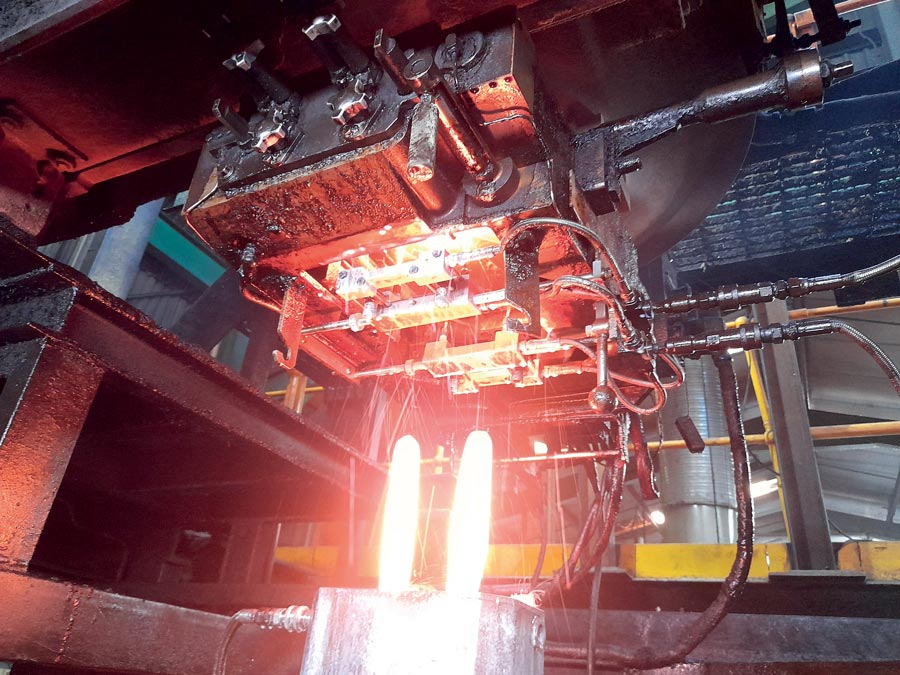

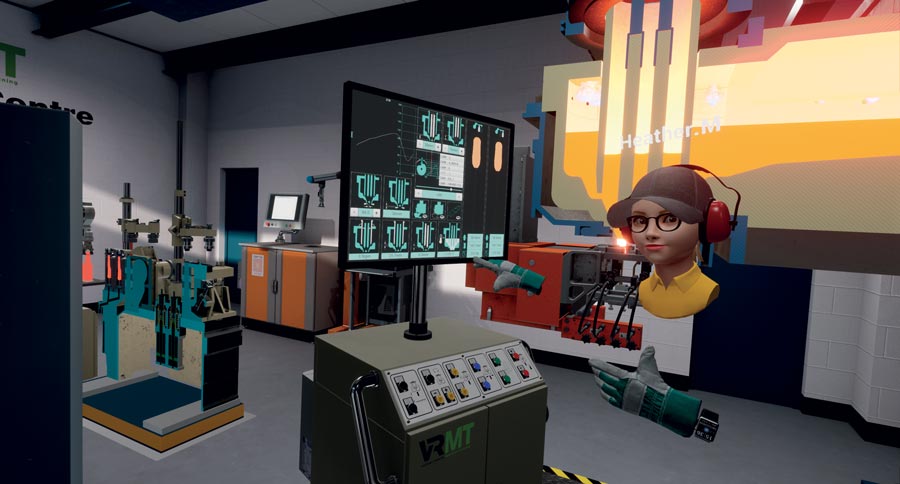
IS TRAINING IMPROVED BY THE USE OF VIRTUAL REALITY
“In my role as Head of Engineering at Allied, I was responsible for the IS maintenance department and one of the things that stood out for me was the massive step from classroom training to undertaking the real task. However good the training, the step from watching a trainer modifying gob defectors to doing it yourself is a daunting one. It was clear that through virtual reality, we could create a safe environment for people to learn and even make mistakes that do not have the same severe consequences that may occur when working on a live machine. In VR, a mistake becomes a recordable learning outcome.”
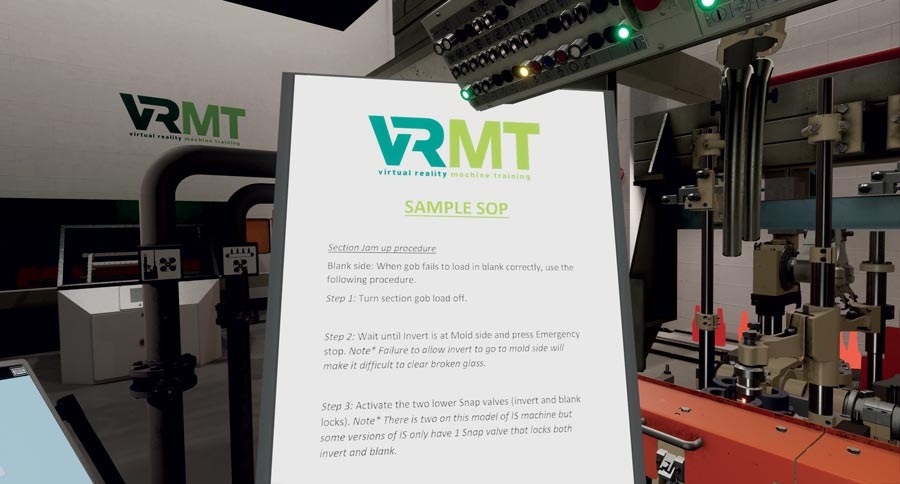
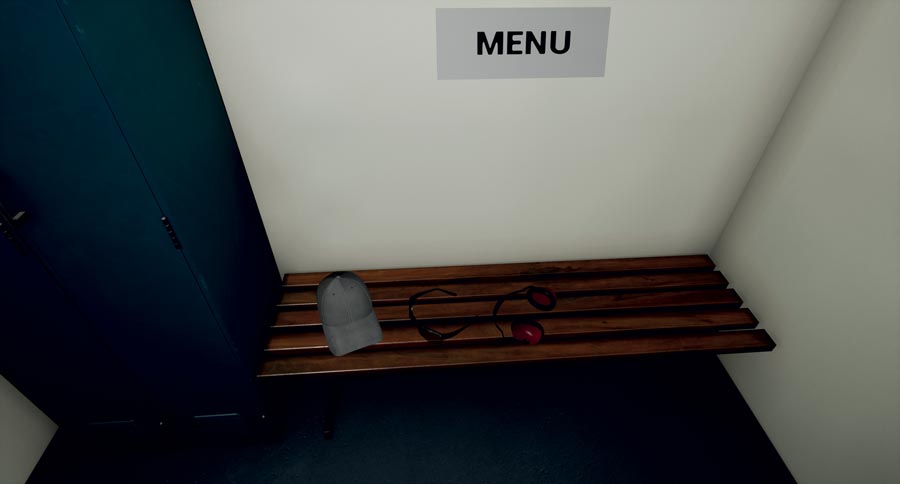
DESIGN CONSIDERATIONS
“When we began to develop the code for a virtual training section, the first challenge was to understand our intended audience. It was clear from the start that we could not develop an exact copy of each IS machine in the world. Even new machines from the same manufacturer can be different i.e. valves, pipes in different positions etc. The second challenge is that we did not have any drawings of the individual components. We knew from the start that we could not commercially develop a different machine for each company and to be honest I think our product is, first and foremost, all about learning the concepts behind glass manufacturing in a safe learning environment, and not recreating individual factories.”
“Other major design considerations were that it had to be an environment where people from around the world can join and work together, which can mitigate the need to travel. We also had to ensure that all PDF and video training material previously used by a company, can be used within the environment but be very secure to the company and cannot be accidentally leaked to a third party. Therefore, all documents lie on the individual computers and not in a cloud, etc.”
“The vision of the VRMT virtual training tool training is to encompass all the realistic functions of a typical IS machine so it was obvious we had to develop it on the 360° drum event timing that is the industry standard. The virtual reality IS machine events can be changed by altering drum timing like the real task. Health and Safety is another core value, which is why you cannot even get into the factory without PPE. Encroachment into dangerous areas is identified by a red barrier and there is even an IS machine fire module.”
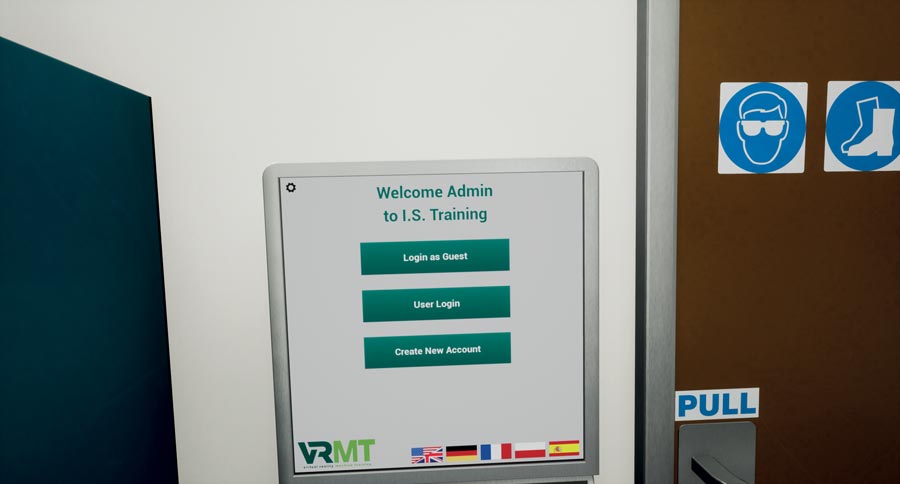
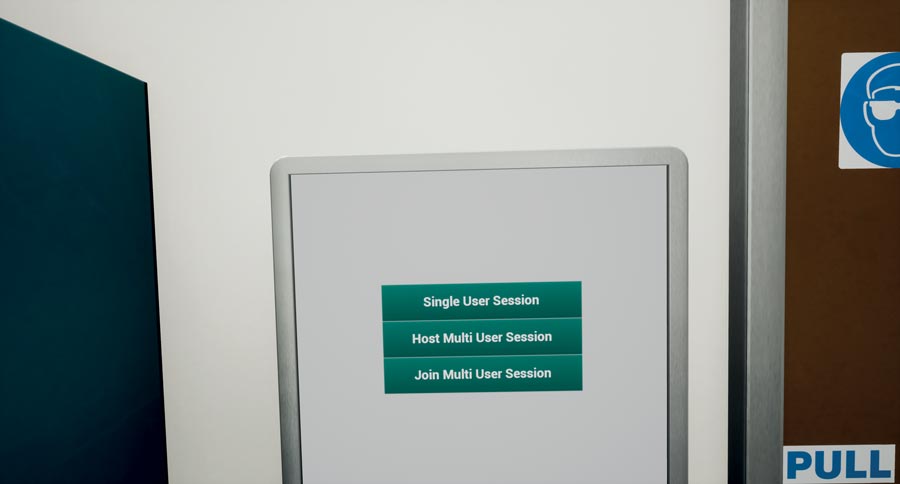
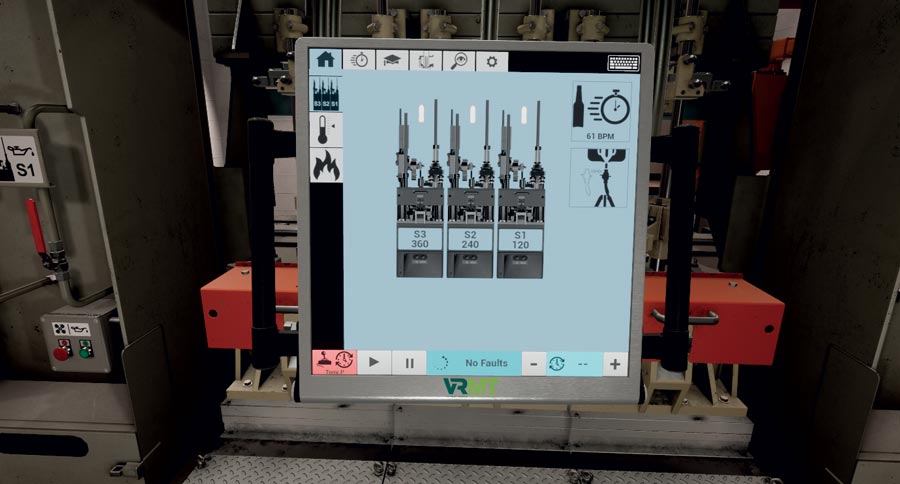

DEVELOPMENT STEPS
“We knew we would not be able to obtain any drawings from machine suppliers because naturally they would not release proprietary drawings to a third party. We therefore had no choice but to painstakingly design it from photographs that are readily available and use fixed measurements for scaling our drawings. Also our beta testing company Beatson Clark, kindly offered some oral explanation of the process and I utilised my contacts from the industry to make sure what we were developing was accurate.”
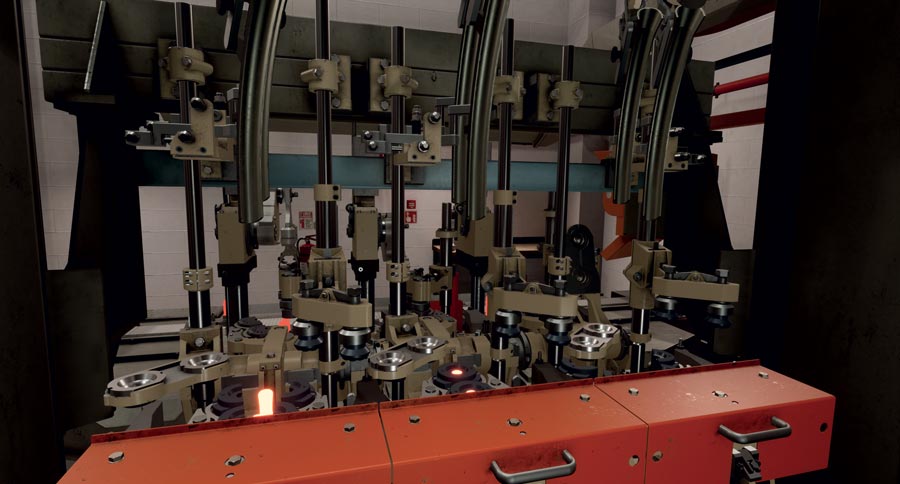
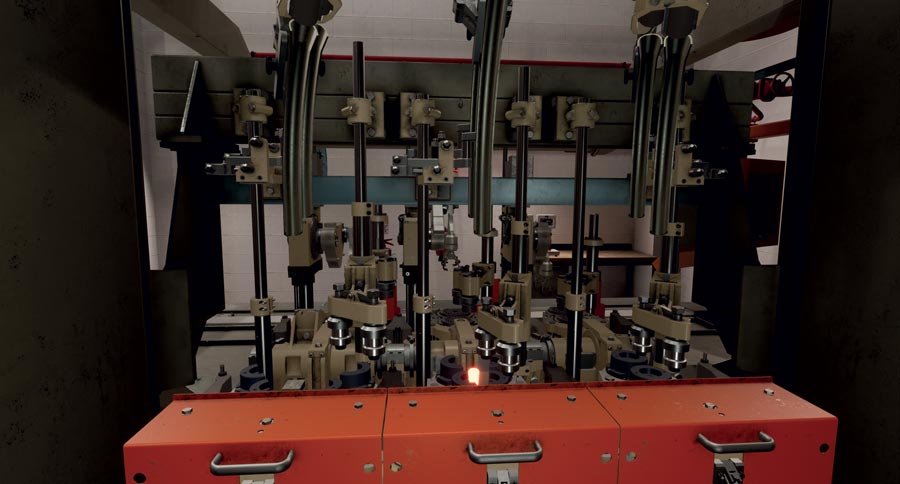

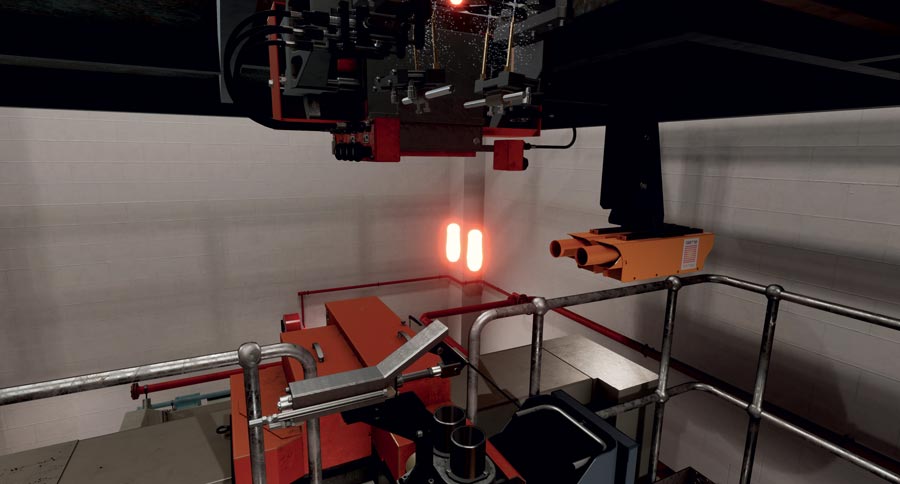
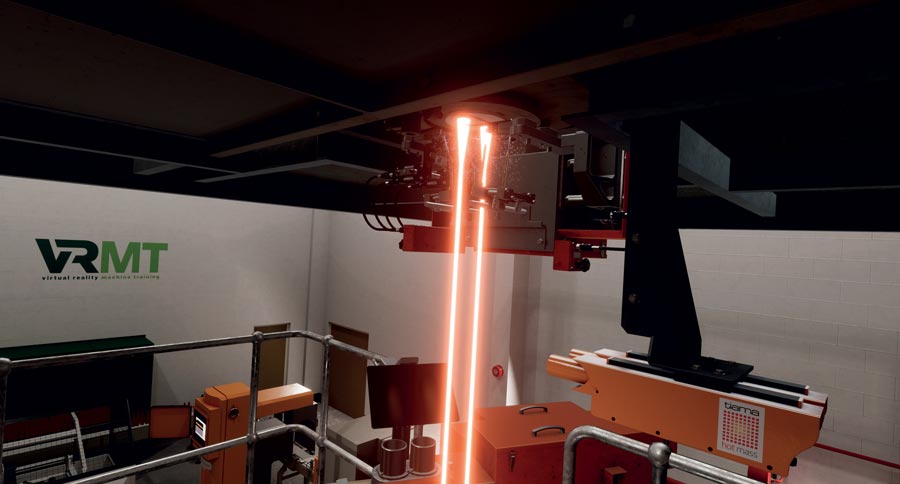
A SELECTION OF SOME OF THE VIRTUAL REALITY FUNCTIONS
The photos in this article show just some of the functions available in the Virtual hot-end developed by VRMT. These include the main factory with a 3-section IS machine and a training centre with a single section and feeder, both of which can be cut in half to aid understanding.
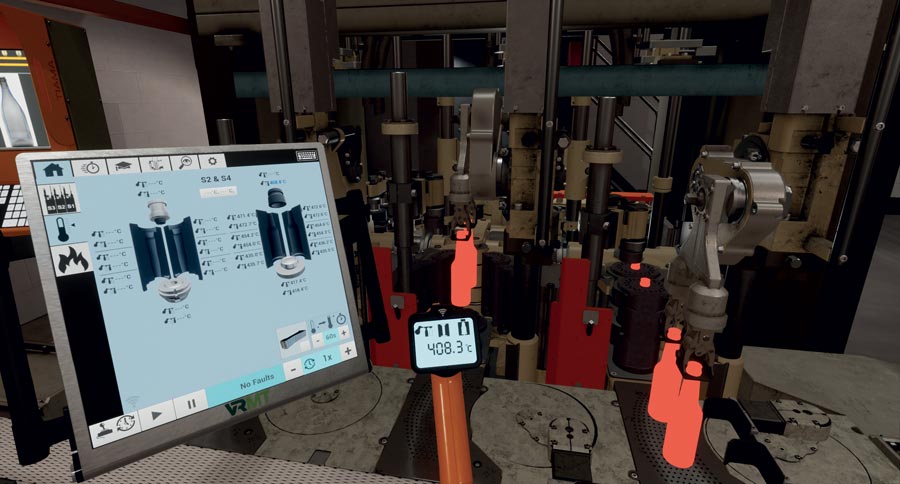
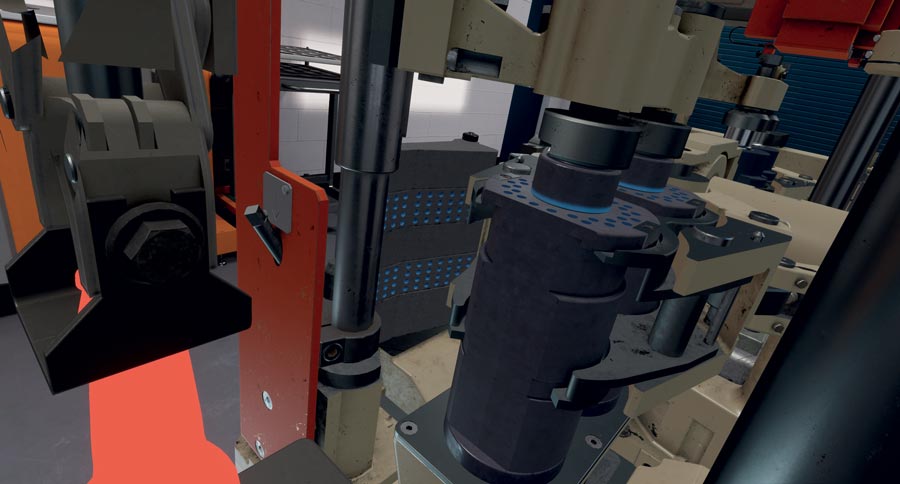

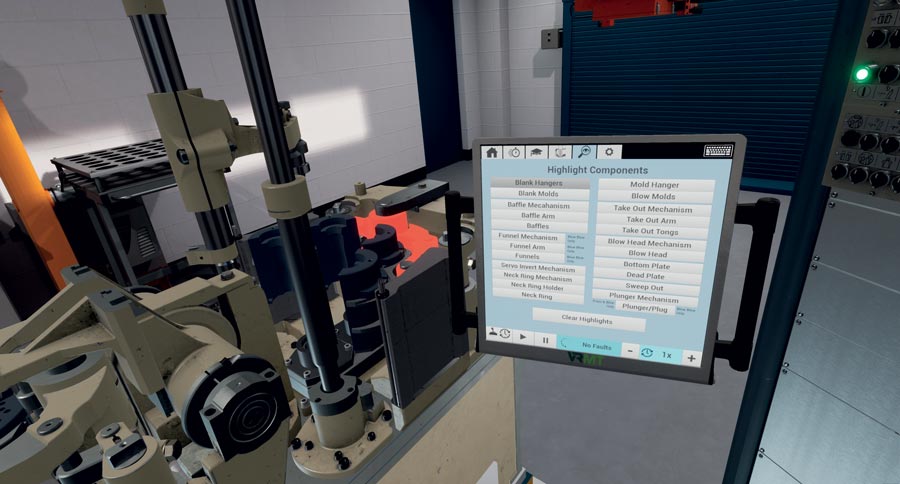
THE FUTURE FOR VRMT AND OUR CUSTOMERS
“The VRMT system is continually being developed and we are currently working on gob retardation and delivery adjustment. Fault creation as a function of how the operator sets the IS machine and feeder, is the next project before we begin work on developing a regenerative, end fired furnace. All upgrades are downloaded remotely as and when they become available throughout the duration of the subscription-based contract.”
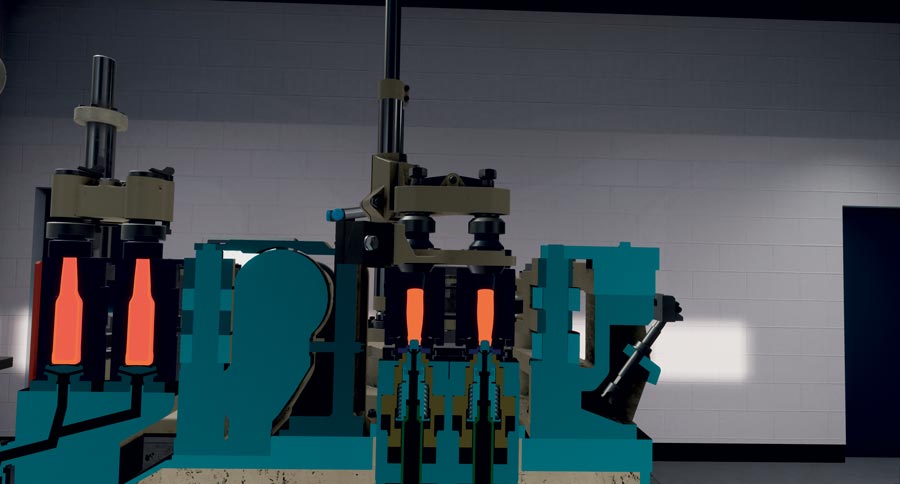
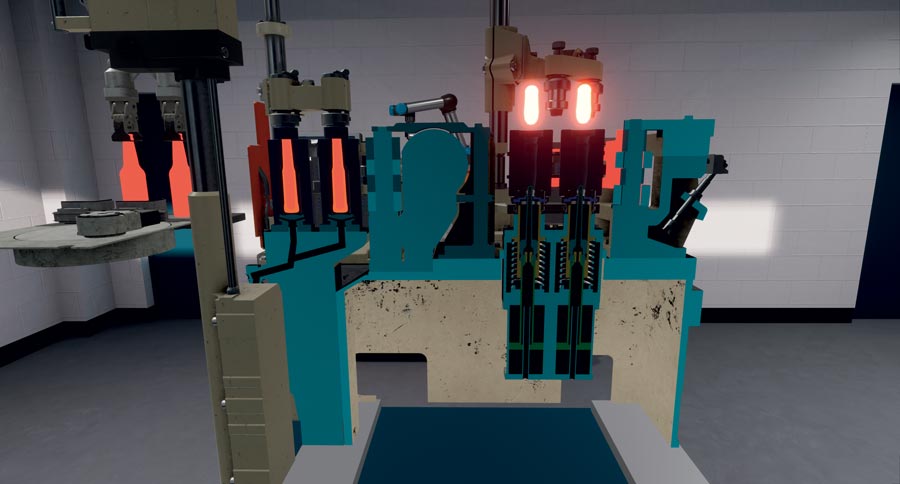
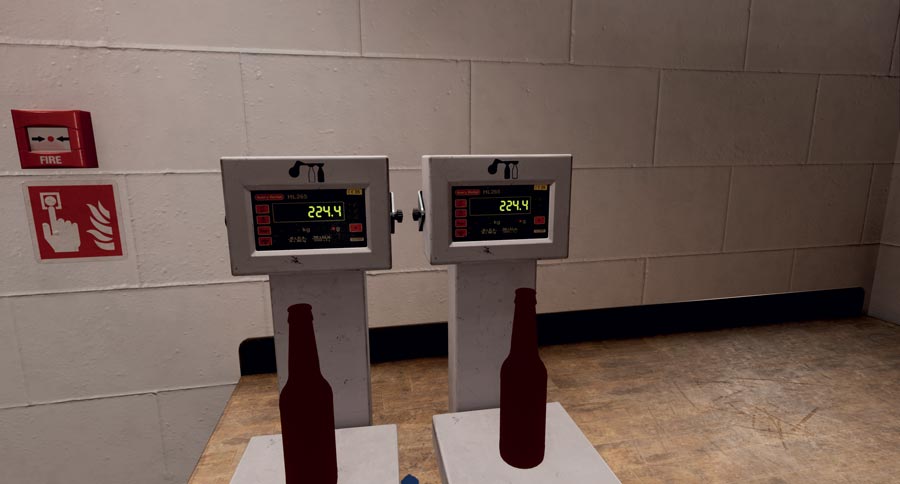
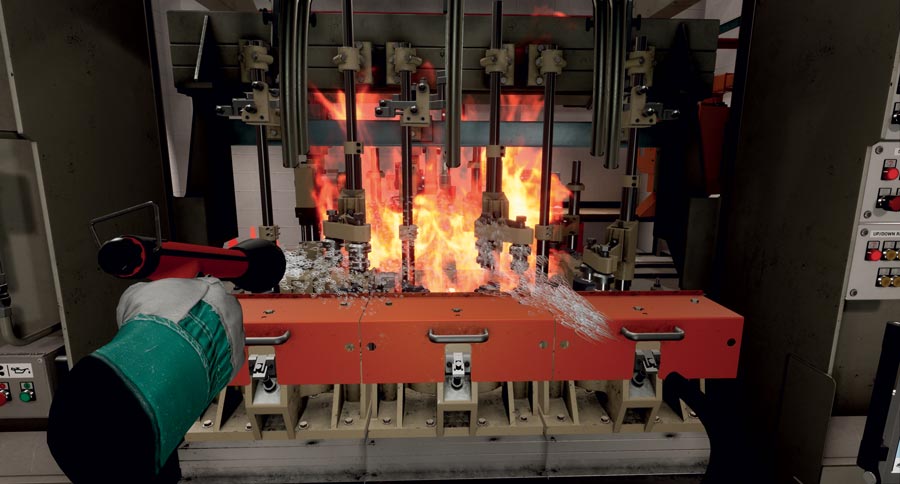
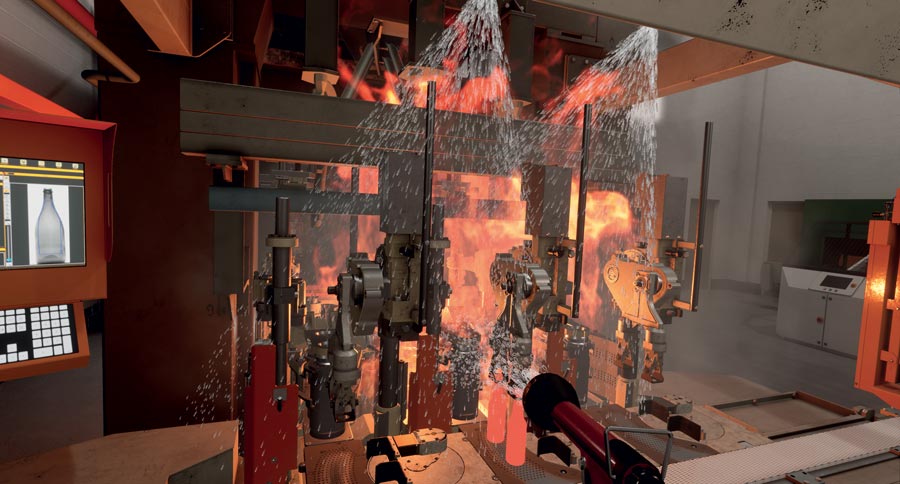
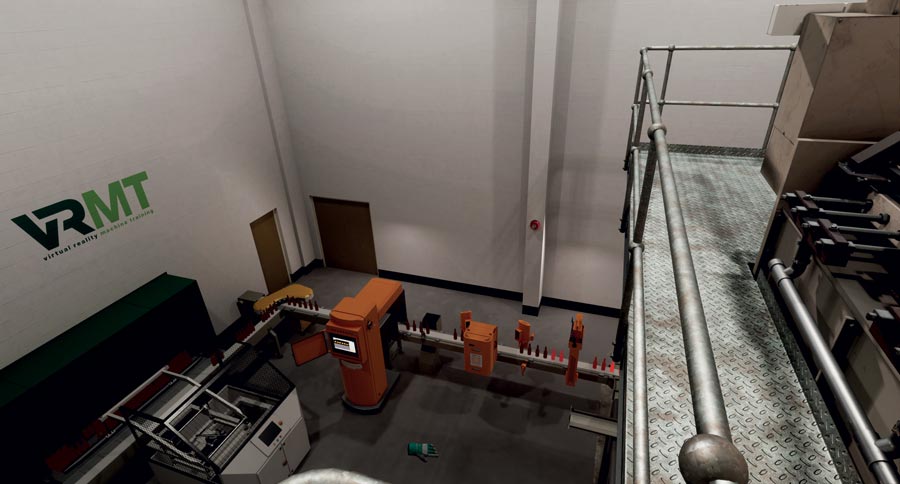

Virtual Reality Machine Training
www.vrmt.co.uk






